Cyanobacteria cited in Mississippi and Alabama farms
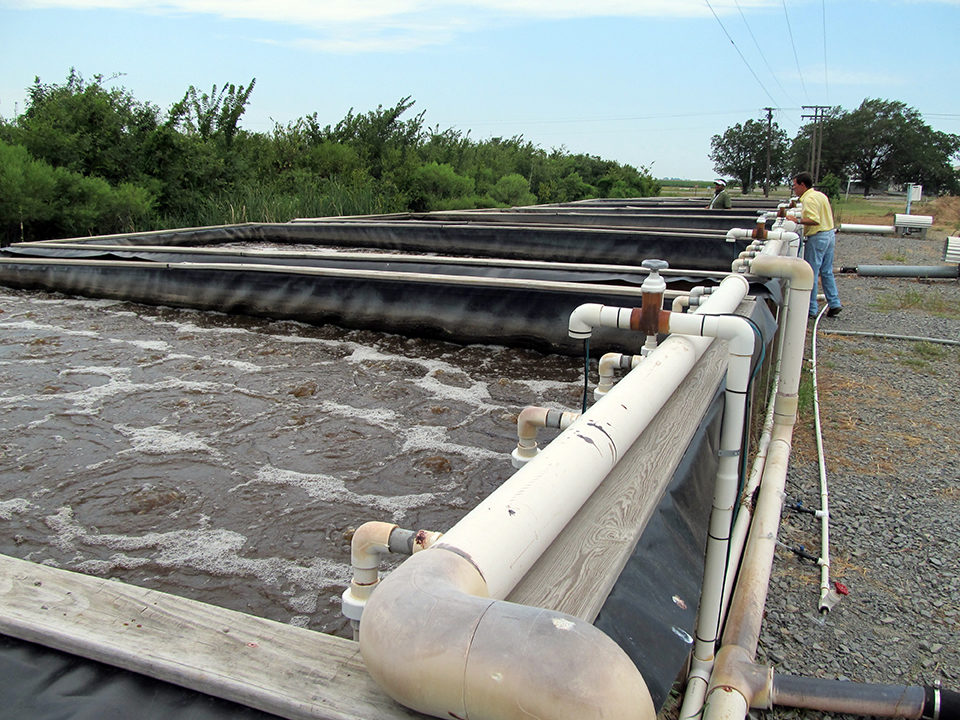
Biofloc technology production systems continue to increase in popularity worldwide for the culture of various aquatic animals. These systems rely on living microorganisms in the biofloc – microbial biomass and particulate organic matter – to assist in ammonia removal by phytoplankton and bacterial uptake, bacterial oxidation of ammonia-nitrogen to nitrite-nitrogen and then subsequent oxidation of nitrite-nitrogen to nitrate-nitrogen during nitrification. These biological processes are critical in reducing ammonia and nitrite to levels below those that can be toxic or limit the growth of cultured finfish.
Off-flavor agents in catfish
Currently, most production of channel catfish (Ictalurus punctatus) in the southeastern United States is performed in earthen, embankment-type ponds. Phytoplankton such as cyanobacteria (blue-green algae) in these ponds assimilate and reduce ammonia-nitrogen concentrations in the pond water. However, the cyanobacteria usually dominate the phytoplankton communities in catfish ponds, and certain species can produce the common “earthy” and “musty” compounds geosmin and 2-methylisoborneol (MIB), respectively.
Certain species of actinomycetes, another group of bacteria, also produce geosmin and MIB, but actinomycetes are considered minor contributors to off-flavors in pond-raised catfish. The accumulation of these compounds in catfish flesh renders the fish unpalatable and unmarketable, with estimated annual economic losses to producers of $10 million to $60 million. In catfish ponds located in Mississippi and Alabama, USA, the cyanobacteria species Planktothrix perornata has been identified as the main source for MIB-related off-flavor in channel catfish, while geosmin production is commonly attributed to certain cyanobacteria species of Anabaena. However, detailed studies of the types and occurrences of environmentally derived off-flavors and the responsible microorganisms in freshwater, outdoor biofloc systems have not been performed.
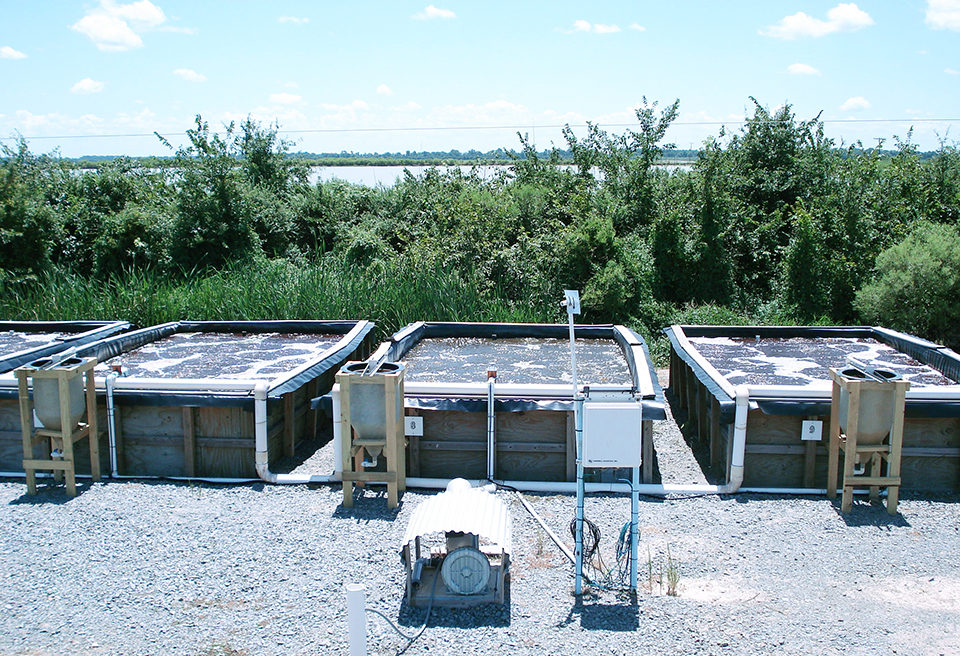
Catfish studies
The authors performed studies in 2010 and 2011 that identified phytoplankton in water samples and examined water samples and catfish fillets for geosmin and MIB levels. Water samples were also plated on agar media to potentially isolate geosmin- and/or MIB-producing actinomycetes.
Nine 18.6-m2 wood-framed tanks with mean depth of 0.81 m were lined with high-density polyethylene. A blower system provided air continuously through a diffuser grid on the bottom of each tank. Tanks were filled with well water, and fingerling channel catfish were stocked into tanks during May in 2010 and April in 2011. Fish in each tank were fed daily with 32 percent-protein, floating extruded feed to satiation.
Pond water that did not contain undesirable species of cyanobacteria was added to the tanks to expedite development of a phytoplankton bloom to aid in the removal of total ammonia-nitrogen. Dried molasses, a carbon source for microorganisms, was also added to individual tanks in response to a sudden increase in ammonia levels in order to stimulate bacterial transformation of total ammonia-nitrogen. The tanks were operated with zero water exchange, although water was added as required to replace evaporative losses and maintain the water level at 5 to 10 cm below the top of the drain pipe.
Composite water samples were collected biweekly in 2010 and monthly in 2011 from each tank. At the end of each study, five catfish were selected at random from each tank for analysis.
Results
The maximum concentrations of MIB and geosmin in tank water measured in both studies were substantially lower than those typically observed in catfish ponds in the southeastern U.S., where concentrations of MIB and geosmin can exceed 700 and 2,000 ng/L, respectively. On most sampling dates, geosmin levels in pond water were below the instrument detection limit of 1 ng/L, while MIB levels were less than 10 ng/L.
Results from the 2010 study found that although some of the catfish harvested from each tank at the end of the growout cycle contained geosmin in their flesh, the geosmin levels in most of these catfish were below 100 ng/kg. Only one tank yielded catfish with MIB at levels above 200 ng/kg, the sensory detection threshold value for the average trained flavor checker (Table 1). The fish showed MIB levels of 390 to 932 ng/kg.
Schrader, Mean geosmin and 2-methylisoborneol levels, Table 1
| Tank | Tank R1 | Tank R2 | Tank R3 | Tank R4 | Tank R5 | Tank R6 | Tank R7 | Tank R8 | Tank R9 |
|---|---|---|---|---|---|---|---|---|---|
| Geosmin (ng/kg) | 1.6 ± 0.3 | 3.8 ± 0.2 | 25.4 ± 2.9 | 44.4 ± 8.4 | 482.2 ± 94.9 | 35.8 ± 4.6 | 5.0 ± 0.7 | 60.8 ± 11.4 | 140.8 ± 17.6 |
| MIB (ng/kg) | 55.0 ± 3.7 | 38.6 ± 5.9 | 24.8 ± 3.1 | 33.4 ± 7.0 | 644.0 ± 91.4 | 25.0 ± 1.4 | 20.8 ± 1.6 | 31.6 ± 4.6 | 61.4 ± 8.1 |
In the 2011 study, none of the tanks yielded fish with sufficient levels of geosmin or MIB to result in off-flavor catfish (Table 2).
Schrader, Mean geosmin and 2-methylisoborneol levels, Table 2
| Tank | Tank R1 | Tank R2 | Tank R3 | Tank R4 | Tank R5 | Tank R6 | Tank R7 | Tank R8 | Tank R9 |
|---|---|---|---|---|---|---|---|---|---|
| Geosmin (ng/kg) | 33.8 ± 2.5 | 289.6 ± 51.0 | 63.2 ± 10.6 | 98.0 ± 9.9 | 38.4 ± 5.0 | 51.0 ± 8.3 | 24.8 ± 3.9 | 121.4 ± 9.2 | 29.4 ± 2.8 |
| MIB (ng/kg) | 84.2 ± 6.5 | 20.2 ± 4.4 | 26.4 ± 2.5 | 128.8 ± 15.7 | 21.4 ± 1.4 | 23.4 ± 3.5 | 27.0 ± 3.2 | 19.6 ± 0.5 | 12.0 ± 2.0 |
Cyanobacteria communities
During both studies, neither P. perornata nor Anabaena species were observed in any of the water samples. These filamentous, planktonic cyanobacteria possess the ability to regulate cell buoyancy by collapse and reformation of intracellular gas vesicles in poorly mixed and stratified waters. This physiological mechanism allows cyanobacteria to outcompete other types of phytoplankton for sunlight, especially in catfish pond waters, which can easily become stratified during periods of low mixing.
The tanks used in the biofloc systems were continuously mixed and did not have earthen sediment bottoms. Therefore, conditions were less favorable for the growth of the larger, filamentous cyanobacterial species commonly associated with geosmin and MIB production in catfish ponds.
None of the small, non-filamentous colonial cyanobacteria present have been conclusively identified as producers of geosmin or MIB. In addition, there was no isolation of geosmin- or MIB-producing actinomycetes from the water samples in either study.
During both studies, communities of phytoplankton including algae and cyanobacteria attached to bioflocs were frequently dominated by fast-growing, unicellular and small colonial types of green algae and diatoms, and slower-growing, small colonial types of cyanobacteria. Compared to cyanobacteria, green algae are the preferred type of phytoplankton in outdoor aquaculture systems because they are better oxygenators of the water, serve as a better base for aquatic food chains and are not associated with the production of off-flavor compounds or toxins.
Eukaryotic phytoplankton such as green algae and diatoms tend to proliferate under conditions of variable light and nutrient regimes. Because the nutrient-loading rates of the biofloc systems were consistently high, the variable light conditions likely contributed more than variable nutrient regimes to the dominance of the phytoplankton communities by eukaryotic phytoplankton.
(Editor’s Note: This article was originally published in the March/April 2013 print edition of the Global Aquaculture Advocate.)
Now that you've reached the end of the article ...
… please consider supporting GSA’s mission to advance responsible seafood practices through education, advocacy and third-party assurances. The Advocate aims to document the evolution of responsible seafood practices and share the expansive knowledge of our vast network of contributors.
By becoming a Global Seafood Alliance member, you’re ensuring that all of the pre-competitive work we do through member benefits, resources and events can continue. Individual membership costs just $50 a year.
Not a GSA member? Join us.
Authors
-
Kevin K. Schrader, Ph.D.
U.S. Department of Agriculture
Agricultural Research Service
Natural Products Utilization Research Unit
National Center for Natural Products Research
P. O. Box 8048
University, Mississippi 38677-8048 USA[118,111,103,46,97,100,115,117,46,115,114,97,64,114,101,100,97,114,104,99,115,46,110,105,118,101,107]
-
Bartholomew W. Green, Ph.D.
U.S. Department of Agriculture
Agricultural Research Service
Harry K. Dupree Stuttgart National Aquaculture Research Center
Stuttgart, Arkansas, USA -
Peter W. Perschbacher, Ph.D.
Retired, Formerly at Aquaculture/Fisheries Center
University of Arkansas at Pine Bluff
Pine Bluff, Arkansas, USA
Tagged With
Related Posts
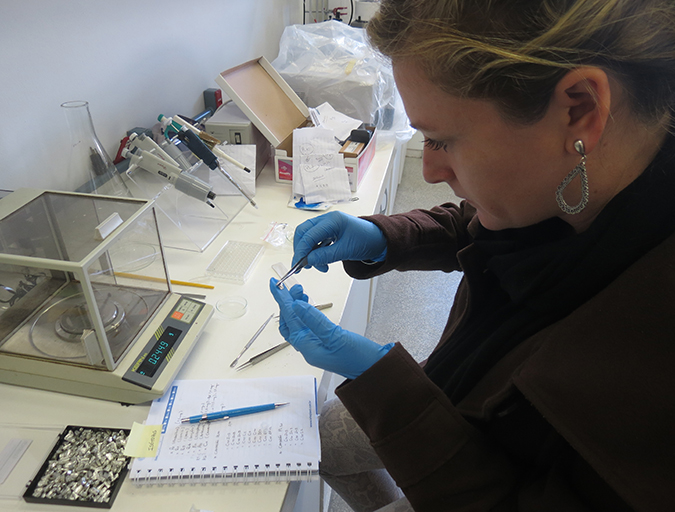
Aquafeeds
Biofloc consumption by Pacific white shrimp postlarvae
The stable isotopes technique with δ13C and δ15N can be used to determine the relevance of different food sources to shrimp feeding during the pre-nursery phase of Litopenaeus vannamei culture. During this trial, different types of commercial feed, microalgae, Artemia sp. nauplii and bioflocs were used as food sources.
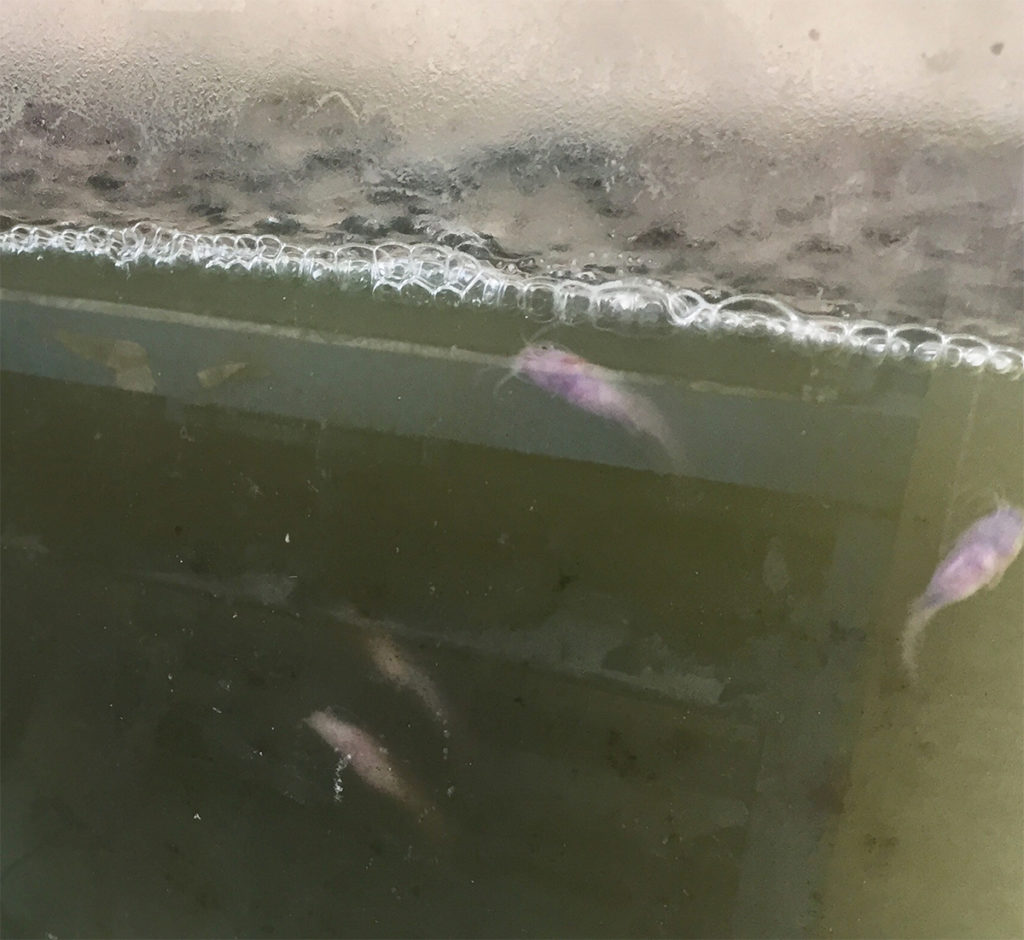
Health & Welfare
Biofloc technology holds potential for carnivorous fish species
Juvenile carnivorous African catfish performed well in biofloc-based systems, which could help produce better quality and more disease-resistant seed of this important aquaculture species and support the expansion of African catfish farming industry.
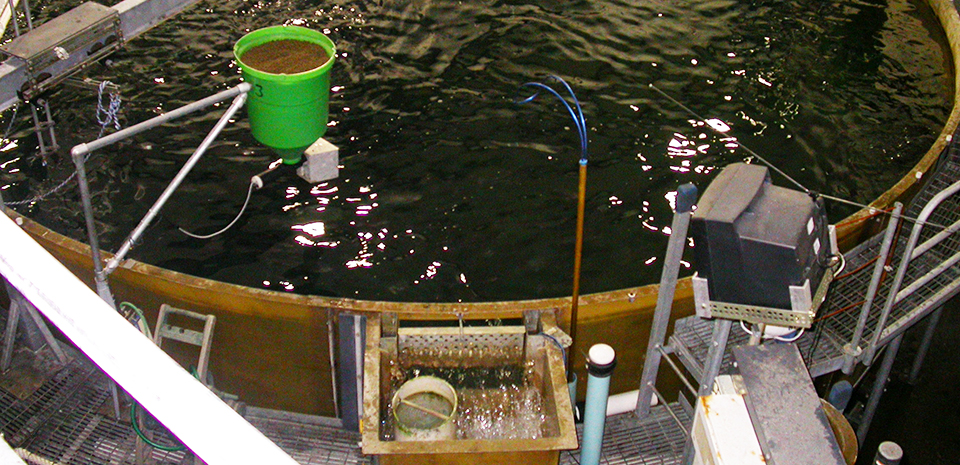
Health & Welfare
Off-flavors in salmonids raised in RAS
The presence of compounds such as geosmin and 2-methylisoborneol (MIB) in recirculating aquaculture systems (RAS) can result in earthy or musty off-flavors in salmonids raised in the systems.
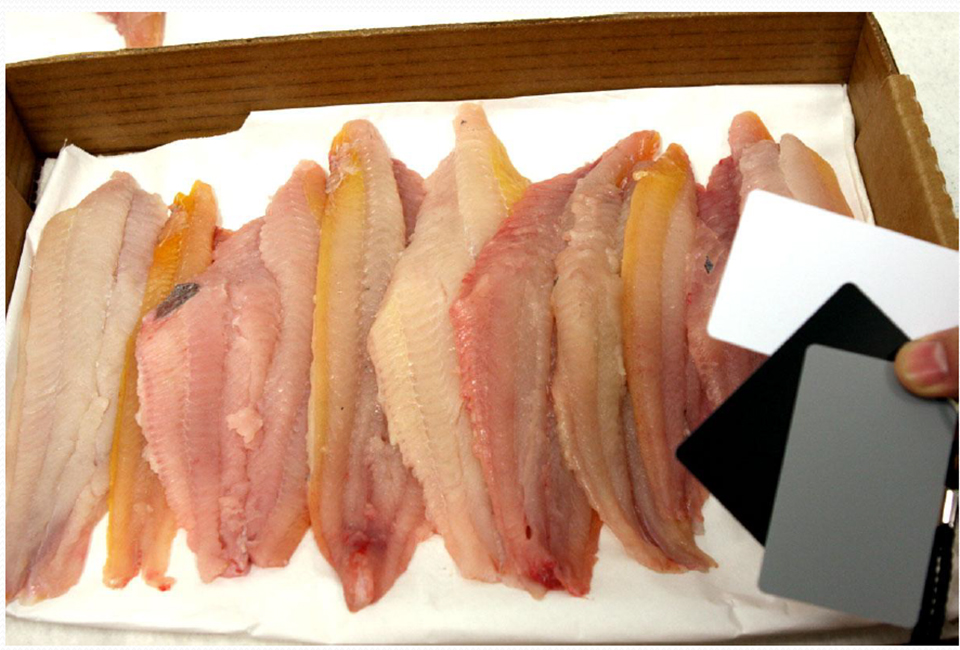
Innovation & Investment
Assessing coloration in channel catfish fillets
Because consumers look at color to gauge quality of catfish fillets, the authors developed a digital photography measurement method to assess yellowness.



